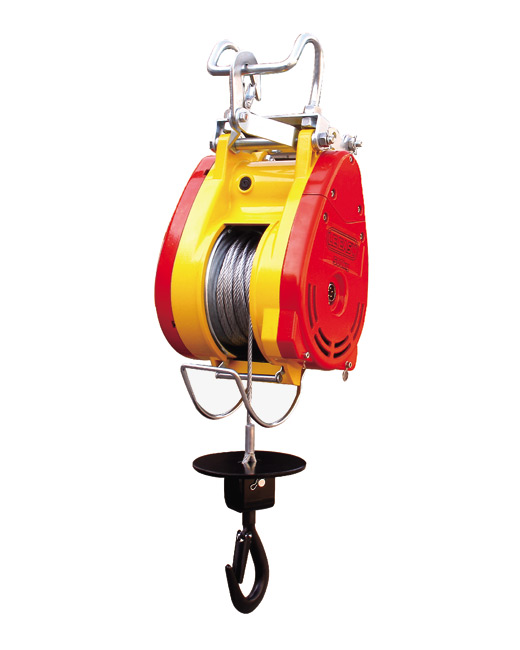The duty cycle and lifting speed of portable electric hoists can vary depending on the specific model and manufacturer.
However, here are some general guidelines and typical ranges:
Duty Cycle: Portable electric hoists usually have a duty cycle that indicates the amount of continuous operation they can handle without overheating. Duty cycles are expressed as a percentage and typically range from 25% to 60%. For example, a 50% duty cycle means the hoist can operate for 5 minutes and then needs to rest for 5 minutes to prevent overheating. Higher duty cycles indicate that the hoist can handle more continuous operation.
Lifting Speed: The lifting speed of portable electric hoists is measured in feet per minute (fpm) or meters per minute (mpm). The lifting speed can vary based on the hoist’s design, motor power, and load capacity. Typical lifting speeds for portable electric hoists range from around 10 fpm to 40 fpm (3 mpm to 12 mpm). However, it’s important to note that lifting speed may decrease as the load capacity approaches the maximum rating of the hoist.
It’s important to refer to the manufacturer’s specifications and product documentation for the specific duty cycle and lifting speed of a particular portable electric hoist model. These specifications will provide accurate and detailed information on the hoist’s capabilities and limitations.
How does the lifting speed of a portable electric hoist affect its performance?
The lifting speed of a portable electric hoist can have an impact on its overall performance and suitability for different applications.
Here are some considerations regarding the lifting speed of a portable electric hoist:
Efficiency and Productivity: A faster lifting speed can enhance efficiency and productivity in lifting operations. It allows for quicker lifting and lowering of loads, reducing the time required to complete tasks. This can be particularly beneficial when repetitive lifting tasks need to be performed or when time is a critical factor in completing a job.
Time-Sensitive Applications: In certain applications, such as construction, manufacturing, or assembly lines, where time-sensitive operations are involved, a faster lifting speed can help meet production targets and deadlines. It allows for swift movement of loads, portable electric hoist improving overall workflow and throughput.
User Experience: A faster lifting speed can positively impact the user experience by providing a more responsive and dynamic operation. Operators may find it more convenient and efficient to work with a hoist that has a higher lifting speed, as it reduces waiting time and allows for quicker load positioning.
Load Handling and Safety: While a faster lifting speed can be advantageous in many situations, it is essential to consider the load being lifted and ensure that the hoist’s lifting speed is compatible with the load’s weight and stability. It is crucial to adhere to the manufacturer’s guidelines and safety recommendations to prevent overloading or compromising the stability of the load.
Precision and Control: In some applications that require precise load positioning or delicate handling, a slower lifting speed may be preferred. Slower speeds allow for finer control during lifting and lowering, reducing the risk of accidental collisions or damage to the load.
Power Consumption: It’s worth noting that a faster lifting speed may require more power consumption from the electric hoist. This can impact the operating costs and the capacity of the power source available at the work location. It is important to consider the power requirements and availability when selecting a hoist with a particular lifting speed.
When selecting a portable electric hoist, it’s crucial to assess the specific requirements of the lifting tasks and consider factors such as load weight, precision needs, time constraints, and safety considerations. By matching the lifting speed of the hoist to the demands of the application, you can optimize performance and ensure efficient and safe lifting operations.



